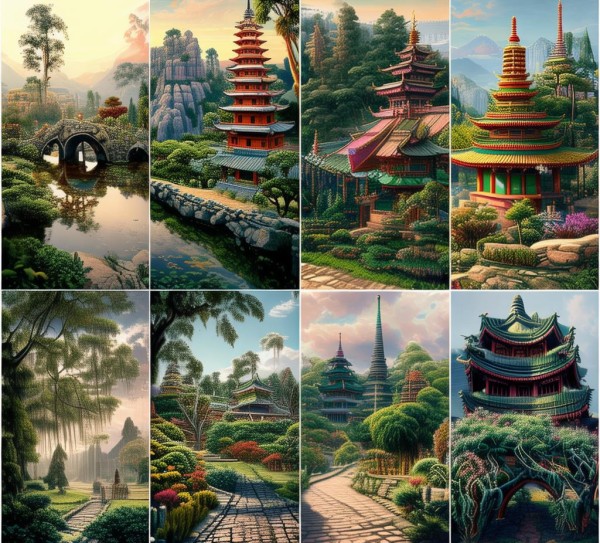This text delves into the exploration of cultural landscapes, offering a humanistic perspective on scenic journeys. It emphasizes the significance of understanding and appreciating the cultural heritage embedded within natural environments.
In the vast tapestry of the world, each country weaves its unique story through the landscapes it presents. These landscapes, more than mere geographical features, are the canvas upon which human history and culture are painted. This essay embarks on a journey through some of the most captivating humanistic scenery, exploring the stories they tell and the lessons they impart.

The first stop on our journey is the serene gardens of Kyoto, Japan. These meticulously crafted gardens, with their carefully arranged stones, trees, and water features, are not just places of beauty but also of profound meaning. Each element in these gardens symbolizes a different aspect of life, from the flowing water representing the impermanence of existence to the moss-covered stones symbolizing the tranquility of the natural world. The gardens of Kyoto invite us to reflect on the harmony between humanity and nature, reminding us of the importance of balance in our lives.
Moving to the vibrant streets of Rio de Janeiro, Brazil, we find a different kind of humanistic scenery. The famous Christ the Redeemer statue, towering over the city, is a testament to the power of faith and the human spirit. The statue, a symbol of hope and salvation, stands as a beacon to all who visit. Below, the vibrant street life of Rio, with its samba schools and colorful houses, reflects the joy and rhythm of the Brazilian people. The humanistic scenery of Rio teaches us about the importance of celebrating life and embracing our cultural heritage.
Our next destination is the ancient city of Petra, Jordan. This UNESCO World Heritage site is a marvel of human ingenuity and architectural skill. The towering cliffs and intricate carvings tell the story of the Nabatean people, who once inhabited this area. The Siq, a narrow cha leading to the Treasury, is a dramatic entrance to the city, evoking a sense of awe and wonder. Petra's humanistic scenery teaches us about the resilience of human civilization and the enduring power of art and architecture.
Continuing our journey, we arrive in the heart of Tuscany, Italy. The rolling hills, dotted with vineyards and olive groves, are a testament to the Italian passion for agriculture and the land. The Renaissance towns of Florence and Siena, with their magnificent cathedrals and piazzas, are a celebration of human achievement in art, science, and culture. The humanistic scenery of Tuscany reminds us of the importance of creativity and the pursuit of knowledge.
The final stop on our journey is the Great Wall of China, a symbol of human perseverance and determination. This ancient structure, stretching over 13,000 miles, was built to protect the Chinese empire from invasions. The Wall, with its watchtowers and stone battlements, is a testament to the ingenuity and strength of the Chinese people. The humanistic scenery of the Great Wall teaches us about the importance of unity and the power of collective effort.
In conclusion, the humanistic scenery of the world is a rich tapestry of stories, each thread woven from the experiences and creativity of humanity. From the serene gardens of Kyoto to the vibrant streets of Rio, from the ancient city of Petra to the rolling hills of Tuscany, and from the Great Wall of China to the Renaissance towns of Italy, these landscapes offer us a glimpse into the hearts and minds of the people who shaped them. As we explore these cultural landscapes, we gain a deeper understanding of our own place in the world and the shared values that bind us together.
